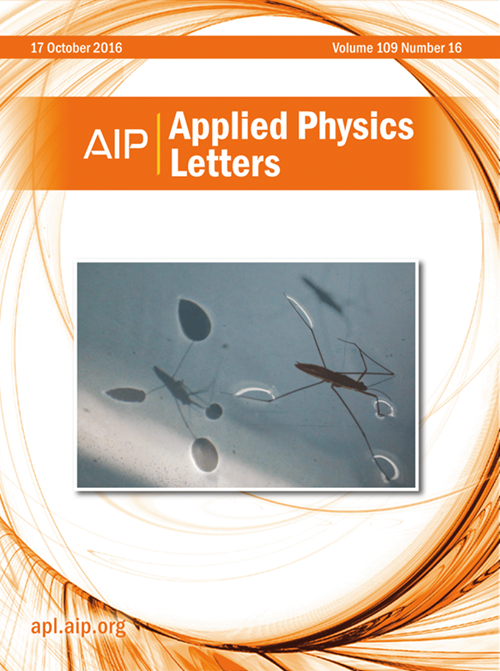In situ alloyed zinc–copper layer accelerates Zn ion migration for highly reversible Zn anodes
IF 3.5
2区 物理与天体物理
Q2 PHYSICS, APPLIED
引用次数: 0
Abstract
Aqueous zinc-ion batteries (AZIBs) have garnered significant attention, but several obstacles associated with zinc anodes impede the advancement of AZIBs. Constructing protective coatings on Zn anodes is a promising strategy to curb zinc dendrite growth and side reactions, yet current techniques remain complex and inefficient. Herein, the in situ alloyed method is employed to generate a CuZn protective interface for a highly reversible Zn metal anode (60CuZn@Zn). Systematic characterization and theoretical calculations have elucidated that the protective layer is likely to effectively suppress the proliferation of zinc dendrites, accelerate the migration of zinc ions, and ameliorate interfacial side reactions. In addition, the optimized coating effectively modulates the interfacial electric field distribution, facilitates uniform nucleation of zinc crystals, and reduces the charge transfer resistance, thereby enhancing the electrochemical performance of the AZIBs. Consequently, the 60CuZn@Zn anode demonstrates an extended cycling life of over 2800 h at 1 mA cm−2/1 mAh cm−2 and maintains prolonged stability exceeding 1200 h even at a high current density of 10 mA cm−2/1 mAh cm−2. This work presents an accessible, cost-effective approach to fabricating protective coatings for engineering highly reversible zinc anode protective layers.原位合金锌铜层加速了锌离子在高可逆锌阳极上的迁移
含水锌离子电池(AZIBs)已经引起了广泛的关注,但是与锌阳极相关的一些障碍阻碍了AZIBs的发展。在锌阳极上构建保护涂层是抑制锌枝晶生长和副反应的一种很有前途的策略,但目前的技术仍然复杂而低效。本文采用原位合金化方法为高可逆Zn金属阳极(60CuZn@Zn)生成CuZn保护界面。系统表征和理论计算表明,保护层可能有效抑制锌枝晶的增殖,加速锌离子的迁移,改善界面副反应。此外,优化后的涂层有效调节了界面电场分布,促进了锌晶体的均匀成核,降低了电荷传递阻力,从而提高了azib的电化学性能。因此,60CuZn@Zn阳极在1 mA cm - 2/1 mAh cm - 2下的循环寿命超过2800小时,即使在10 mA cm - 2/1 mAh cm - 2的高电流密度下也能保持超过1200小时的长时间稳定性。这项工作提出了一种易于获得的、具有成本效益的方法来制造用于工程高可逆锌阳极保护层的保护涂层。
本文章由计算机程序翻译,如有差异,请以英文原文为准。
求助全文
约1分钟内获得全文
求助全文
来源期刊

Applied Physics Letters
物理-物理:应用
CiteScore
6.40
自引率
10.00%
发文量
1821
审稿时长
1.6 months
期刊介绍:
Applied Physics Letters (APL) features concise, up-to-date reports on significant new findings in applied physics. Emphasizing rapid dissemination of key data and new physical insights, APL offers prompt publication of new experimental and theoretical papers reporting applications of physics phenomena to all branches of science, engineering, and modern technology.
In addition to regular articles, the journal also publishes invited Fast Track, Perspectives, and in-depth Editorials which report on cutting-edge areas in applied physics.
APL Perspectives are forward-looking invited letters which highlight recent developments or discoveries. Emphasis is placed on very recent developments, potentially disruptive technologies, open questions and possible solutions. They also include a mini-roadmap detailing where the community should direct efforts in order for the phenomena to be viable for application and the challenges associated with meeting that performance threshold. Perspectives are characterized by personal viewpoints and opinions of recognized experts in the field.
Fast Track articles are invited original research articles that report results that are particularly novel and important or provide a significant advancement in an emerging field. Because of the urgency and scientific importance of the work, the peer review process is accelerated. If, during the review process, it becomes apparent that the paper does not meet the Fast Track criterion, it is returned to a normal track.
 求助内容:
求助内容: 应助结果提醒方式:
应助结果提醒方式:


